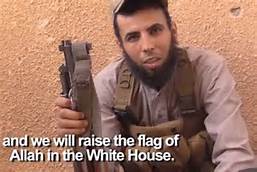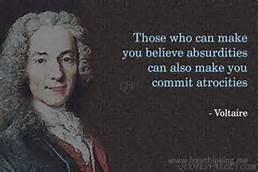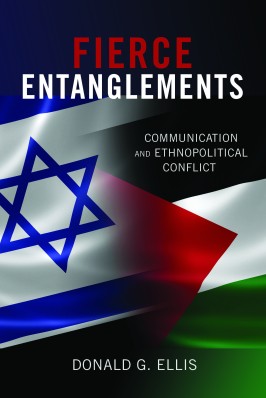Monthly Archives: January 2016
ISIS is for Real
 After drawing attention in last week’s post to the Scott Atran article on how ISIS is a genuine revolution and should be taken seriously, I had a friend observe that I sounded more like a conservative than in the past. It sounded more like I was taking ISIS seriously and perceived them as a genuine threat. I had posted once before (see entry for October 31, 2015) that ISIS was failing and underperforming. This was interpreted by some as not taking ISIS seriously and assuming that they were some sort of upstart movement that would die out easily and quickly.
After drawing attention in last week’s post to the Scott Atran article on how ISIS is a genuine revolution and should be taken seriously, I had a friend observe that I sounded more like a conservative than in the past. It sounded more like I was taking ISIS seriously and perceived them as a genuine threat. I had posted once before (see entry for October 31, 2015) that ISIS was failing and underperforming. This was interpreted by some as not taking ISIS seriously and assuming that they were some sort of upstart movement that would die out easily and quickly.
Nothing could be further from the truth. I agree with Scott Atran that ISIS is a “real” revolution, that it is growing and increasingly attractive to many, that something should be done about it, and whatever we are doing now is probably not sufficient. Unlike many of the Obama haters I do not consider his patience, diplomacy, and slower hand to be signs of weakness. But there was recently a story in the New York Times making essentially the same point. What we are doing now to fight ISIS is not sufficient, but we should be approaching the problem from the long-game perspective and ultimate victory will take time.
ISIS’s violence is transcendental in that it is appeals to a sense of the sublime and gives serious meaning to its adherents with respect to their own destiny, power, and sense of the ultimate. ISIS does not need to see itself as composed of overwhelming numbers. No, it sees itself as a revolutionary vanguard leading the masses and informing them about what is to come. ISIS seeks a tremendous transformation. And the sublime appeal should not be taken lightly. ISIS is increasingly credited with technological and political sophistication and seems to be appealing to the 18-24-year-old group who report that they have some favorable attitudes towards ISIS. This is especially true among the downtrodden whose anger fits nicely into ISIS’s co-option of this anger. And, as Atran points out, these young people attracted ISIS are more willing to fight and engage in violence to defend principles they are not even sure of than are other young people willing to fight and defend democratic values against an onslaught.
ISIS is emerging as consistent with historical revolutions (e.g. French Revolution) where an abstract but powerful commitment to a spiritual force justifies about anything. Visions of universal equality or economic fairness have held equally as powerful sway as have dreams of the future governed by sharia law.
Finally, the rhetorical skills of ISIS and AQ must not be underestimated. They have, for example, reconstructed the concept of a caliphate – a political concept challenged by many historians – as an alternative to a meaningless material world. The caliphate justifies an expanded notion of jihad and holy war against infidels. ISIS leaders have changed maps and bulldozed territorial boundary signs as the remnant of Western colonialism and Sykes Picot rather than holy land that will be part of the caliphate.
Talking to ISIS will probably be futile for some time to come. The two sides are classically incommensurate in that the West engages in moral disagreement from a pragmatic perspective that is without foundational principles. And ISIS is steeped in Islamic foundational principles that are generative of its discourse. Perhaps one day there will be sufficient bridging discourse that the two sides have at least initial commonalities that can strengthen the bridge rather than only the supporters on each side.
ISIS Creates the Difference between the “Rational” and the “Committed.”
 The foundational logic of governing is this: resources, both material and symbolic, are not equally distributed among people. Individuals and groups differ with respect to their personal abilities, education levels, talents, environmental resources, and particular skills. The fact that people in groups are organized around this inequality of resources makes for the “politics of difference.” In other words, politics is fundamentally about managing differences and making it so these differences and the tensions associated with them are under control. It also means that a culturally plural society that demands group-differentiated policies is the norm. Finally, it is a truism that groups seek to maximize their own desired outcomes and it is the communication process that controls these forces. Deliberation, dialogue, bargaining, negotiation, and all sorts of agonistic discourse are part of the political process.
The foundational logic of governing is this: resources, both material and symbolic, are not equally distributed among people. Individuals and groups differ with respect to their personal abilities, education levels, talents, environmental resources, and particular skills. The fact that people in groups are organized around this inequality of resources makes for the “politics of difference.” In other words, politics is fundamentally about managing differences and making it so these differences and the tensions associated with them are under control. It also means that a culturally plural society that demands group-differentiated policies is the norm. Finally, it is a truism that groups seek to maximize their own desired outcomes and it is the communication process that controls these forces. Deliberation, dialogue, bargaining, negotiation, and all sorts of agonistic discourse are part of the political process.
But even though the politics of difference is the norm there are typically forces that are historically more powerful and responsible for driving differences between people and groups. Religion, for example, has become a symbolic resource that separates and marks groups as “different” or an object of distrust. The ISIS revolution is real and a genuine threat. Read Scott Atran on how ISIS is growing and winning its revolution. ISIS is a growing and dynamic counterculture that in two short years has expanded its territory and recruited thousands. It is a radical Sunni revivalism that is beginning to succeed at historic proportions. As a Atran explains, ISIS possesses the largest and most diverse volunteer fighting force since the Second World War.
While the West dithers and considers ISIS’s behavior to be nonrational and horrific it fails, as a Atran explains, to make the distinction between “rational” actors and “committed” actors. Horrific violence is coded into the ISIS religious consciousness so that statements such as “paradise lies under the shade of swords” or there will be “volcanoes of Jihad” become alluring images for the development of a combination of violent and religious consciousness that justifies monstrous behavior with all the power of the “word of God.” What else would prompt a mother to abandon her baby so she could murder innocent people in San Bernardino and then sacrifice her own life. ISIS controls something more than the West controls when it commands behaviors that are infused with significance, when it makes its members feel as though they are part of an authentic consciousness that makes their life worth living. This they are “committed” to. Their behavior is not rational in any practical sense of the term but symbolic of their commitment to this authentic consciousness.
Patriotism, fidelity, obedience, and courage are all abstract psychological conditions that distort the secular motivations of those who are “rational.” These emotions are for ISIS tied to God or Allah and thus held in higher standing. Subjecting them to rationality (e.g. “I will not fight because I might get hurt.” “I must maximize my personal interests.” “My ideals are not worth hurting someone else.”) is ineffective. No, they are subject to commitment. ISIS fighters are committed to obedience and fidelity which makes it easier for them to do anything in the name of obedience and fidelity to God and cause.
Read the Atran article and think more about the “committed.”
“Devoted” Conflict Actors Are Not “Rational” Actors
The participants in intractable conflicts are not “rational” actors; they are, as Scott Atran explains, “devoted” actors. Intractable conflicts are intergroup conflicts and are on the rise. The actors use a logic of identity (I must preference the maintenance of my identity) rather than a logic of consequences (I must maximize my gains) and thus set into motion the construction of ingroup-outgroup distinctions that produce communicative distortions (e.g., false polarization, stereotypes, and attribution errors) and generate misunderstanding and confusion at best, and violence at worst. Identity conflicts and the chauvinism that accompanies them are a major obstacle to peace and a major challenge to a liberal society based on pluralism and respect for differences. The most typical explanation for these ethnic conflicts is Samuel Huntington’s clash of civilizations thesis which is seen as replacing the competition between communism and capitalism with fault lines attributable to ethnoreligious groups. These are intergroup conflicts that require changes in how members of communities interact and perceive one another. Such conflicts are particularly defined by intense ethnic and religious forces and are a recent and virulent form of group conflict.
Divided societies have been studied in an effort to understand their causes and possibilities for resolution. Accordingly, analyses of psychology, economics, politics, and security dilemmas are typical. But a few exceptions notwithstanding , the role of communication has received less attention. There has been a strong tradition of using rational choice theories to explain these conflicts along with social psychologically informed research tradition. Security studies and economic theories represent a second and third strand of research each of which draws on rational choice theoretical assumptions. Rational choice theoretical models assume that group behavior is driven by the consequences of a reward- cost payoff. The utility maximization assumption has been criticized as expecting humans to be cyborg-like maximizers assuming decisions are made in a world of perfect information, when they are not, and failing to understand humans as creative information processors that are subject to more than rational forces. Identity and cultural processes are at the heart of group conflicts and it is essential to explore how culturally constructed identities connect individuals through perceived common experiences. These connections, which are communicative contact links, organize behavior and are responsible for interpreting reality in such a way that conflicts can be mitigated.
Communication is central to understanding and working with these intractable conflicts for four reasons. First, communication is elemental to the conflict; microlevel interactions structure behavior, and actors in intractable conflicts think about the communication process. They strategize, discuss, and manipulate symbols, all in an effort to control others and define themselves. The significant meanings of these conflicts do not reside in individuals but are accomplishments of the participants driven by social and political circumstances. Secondly communication is relevant to both micro and macro levels of society. At the micro-interactional level people argue, persuade, inform, and develop relationships. And then these interactions accumulate into macro structures such as institutions, media systems, and cultural forces that constrain behaviors with respect to racism, sexism, prejudice, and a host of other cultural stereotypes and distortions. These symbolic processes of communication are what bind individuals to political systems. Third, simplistic communication processes cannot resolve intractable conflicts; we know conflicts require interaction. Diplomacy, dialogue, mediation, negotiation and any form of conflict resolution is fundamentally communicative in nature. It is the communication process that reaches across cultural divides and provides the mechanisms by which conflicts are processed. Finally, modern intractable conflicts are ethnopolitical in nature and identity conflicts. They are deeply symbolic and complex with unclear boundaries. Such conflicts require deeper communicative engagement designed to widen the circle of identity and inclusion.
These processes are not naïve or soft, they are the requirements of problem solving.
A Quick Primer on Communication and Peace Education
Peace education remains a lofty goal. Some certainly consider it naive but not those who know better. Communication plays an essential role.
Apart from research about interventions into other circumstances, most work about interventions into conflict is described in the online forum and listserv of the Rockefeller Foundation’s funded Communication Initiative (http://www.comminit.com). The foundation of this area of research is the pioneering development communication research that first began with UNESCO’s commissioned studies of National Farm Radio Forums in low-income states.
Communication and media studies inform the workings of peace education (PE). Communication is about the generation of meaning. This simple definition follows a weak constructivist line of reasoning in which meanings are generated by the interpretive practices of individuals who confront and work to make sense of messages. This interpretive process is operational whether the messages are verbal or nonverbal, or delivered through mediated or face-to-face interaction. The idea of “communication” is subject to cultural implications. Culture is a dynamic interaction where knowledge and experiences are not passively received but actively constructed. Culture may define groups of people in a work place such as office culture, or groups of people in a state—e.g. civic culture. From a cultural standpoint, these people’s knowledge is the result of a cultural context. Meanings in cultures develop on the basis of distinct ways of interpreting symbols and artifacts. Thus, issues such as whether or not communication has occurred, and definitions of “good” and “bad” communication are all dependent on cultural practices. Cultural groups, whose ethnicity, race or religion become invoked for political reasons, namely ethnopolitical groups, are again, those groups that experienced the most conflict. PE, in turn, requires understanding the interpretive practices of the “other” group and learning new ones. The basic challenges of PE cannot escape the centrality of the communication process to conflict resolution; and, moreover, these challenges can clearly benefit from the power of communication technology to shape and distribute effective messages.
Communication and media studies scholars seek to assess, or recommend methods for improving the impact of contact between groups at the face-to-face level and evaluate the impact or capabilities of contact on achieving their desired outcomes. For example, these scholars would evaluate whether use of strategic messages (whether in a face-to-face setting or via a radio program), actually leads to a particular outcome and if so, relate how that outcome helps to manage some aspect of ethnopolitical conflict. While PE scholarship has been sparse, a plethora of assessments and evaluations about interventions into other contexts have been conducted that readily contribute knowledge about how to create and study peace promoting interventions. These areas of scholarship cover matters of cognitive development, health, and voting behaviors The reader looking specifically for communication and media studies research about interventions into conflict will find most of it organized under the category communication for social change.
The above is from the essay below which I suggest as a excellent starting point for examining the relationship between peace education and communication.
Donald G. Ellis and Yael Warshel(2010). The Contributions of Communication and Media Studies to Peace Education, In G. Saloman and E. Cairns (Eds.) Peace Education (pp. 135-153).
The article can be accessed here




